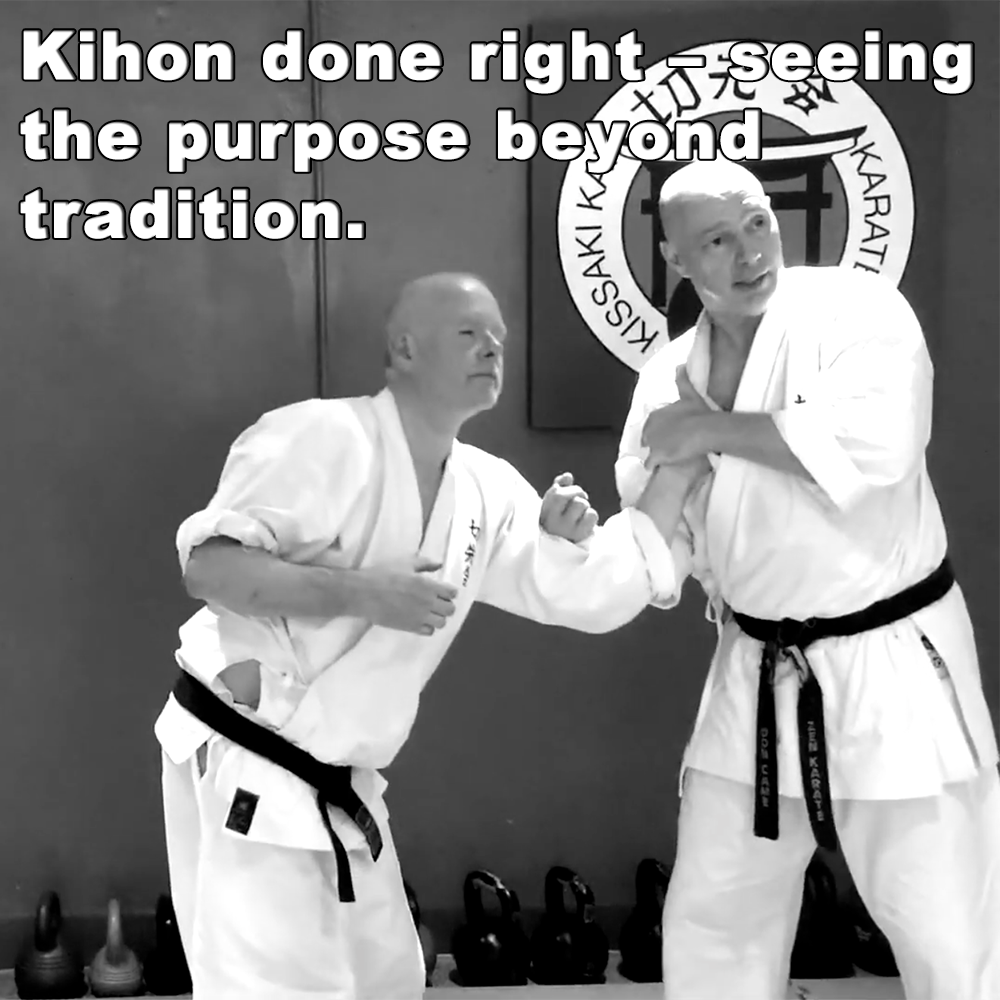
(Approx 1 minute 55 second read)
I wrote an article recently about keeping movements smaller and tighter to engage the kinetic chain. To stop exaggerating movements and making them too large.
.
Of course, there were comments saying you have to practice big first so you can become small later. Utter nonsense, of course. If you train a movement big, you program it big. Under pressure, you won’t magically perform the tighter version you never actually trained. You default to what you’ve drilled.
.
Another comment which was basically on the same subject, asked why soto uke isn’t so prevalent in kata, when gedan barai, uchi uke, and jodan uke appear more often. He said the soto uke movement is too big and would be ineffective.
.
He’s right that it would be ineffective – but only because he’s using it as a block. He’s viewing all his basics as blocks, when clearly they don’t work as such.
.
If you believe your kihon are literal blocks, then of course you think the movement has to be big. You need all that space and wind-up to “block a punch”, because the underlying idea is already wrong.
.
And even his observation about kata isn’t entirely wrong. If you’re counting the modern textbook version of soto uke, yes, you’ll see it less. But kata weren’t designed around today’s four basic blocks. That came much later.
.
Many movements that could function as soto uke, or share the same basic pattern, are given different names in different styles. Some schools don’t even use “soto uke” as a universal label. So when people start counting appearances, they’re using a narrow or inconsistent definition to begin with.
.
Then there was another comment trying to explain away big movements by saying some techniques swing in wide arcs because they might represent throws, entries, or even fights with multiple opponents.
.
This mixes together too many assumptions. A throw doesn’t need a huge wind-up. Closing distance doesn’t need a wide arc either. And the old idea that kata shows fights with multiple opponents is just a story people repeat when they can’t explain the movement.
.
Large arcs aren’t there because the application is big. They’re there because someone misunderstood the purpose of the motion and formalized the exaggeration.
.
All of this shows a bigger problem. There are layers of misunderstanding in karate that people build on without ever questioning. They misunderstand kihon, so they misunderstand kata. They misunderstand kata, so they misunderstand bunkai. And once someone believes some of these movements are literal blocks, everything becomes distorted.
.
They start trying to justify the size, the path, the shape, instead of asking the most basic question: what is the technique actually for?
.
Until that question is answered honestly, nothing else will make sense.
.
.
Written by Adam Carter – Shuri Dojo
.
.
Photo Credit: Image courtesy of Don Came.
.
